 W
WActinoceramus is an extinct genus of fossil saltwater clams, marine pteriomorphian bivalve molluscs. These bivalves were facultatively mobile infaunal suspension feeders.
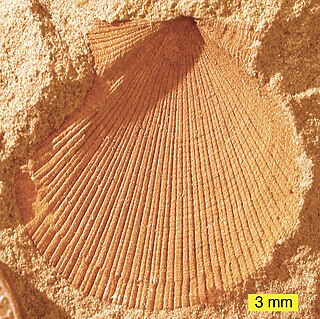 W
WAviculopecten is an extinct genus of bivalve mollusc that lived from the Early Devonian to the Late Triassic in Asia, Australia, Europe, North America, and South America.
 W
WBaluchicardia is an extinct genus of fossil saltwater clams, marine bivalve molluscs in the family Carditidae. These clams were facultatively mobile infaunal suspension feeders.
 W
WCaprina is a genus of rudists, a group of marine heterodont bivalves belonging to the family Caprinidae.
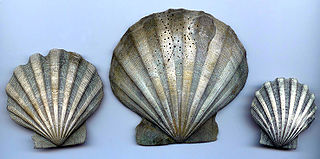 W
WChesapecten is an extinct genus of scallop known from marine strata from the early Miocene to the early Pleistocene of the Eastern United States.
 W
WClaraia is an extinct genus of scallop-like bivalve molluscs that lived from the Capitanian stage of the Late Permian to the Anisian stage of the Middle Triassic, 266-237 million years ago. Fossils have been found worldwide in North America, Europe, Asia, Africa, and Australia. These are common fossils subsequent to the Permian-Triassic boundary, suggesting that the genus experienced rapid diversification during and after the Permian–Triassic extinction event, around 251.4 million years ago.
 W
WCremnoceramus is an extinct genus of fossil marine pteriomorphian bivalves that superficially resembled the related winged pearly oysters of the extant genus Pteria. They lived from the Turonian to the Maastrichtian of the Late Cretaceous.
 W
WCyrenida is an extinct genus of clams in the family Cyrenidae. This name is now accepted as a synonym of Corbicula Megerle von Mühlfeld, 1811.
 W
WDacryomya, or the pointed nutclam is an extinct genus of small-sized saltwater clams, marine bivalve molluscs in the nutclam family Nuculanidae. The size and shape of the shells of species in this genus are reminiscent of broad apple pips.
 W
WDaonella is a genus of oyster-like saltwater clams, marine bivalve mollusks which lived in the middle to late Triassic period. They are related to the genera Aparimella and Halobia. Since they were ubiquitous in the Arctic, Tethys and Panthalassa seas, they are frequently used as index fossils in dating rocks to the Triassic period. However, the systematic classification of the Daonella is still an area of ongoing research.
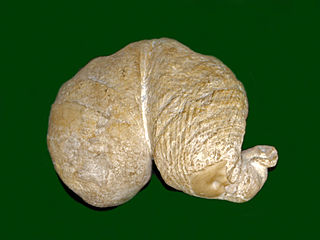 W
WDiceras is an extinct genus of fossil saltwater clams, marine heterodont bivalve molluscs. These bivalves were stationary epifaunal suspension feeders.
 W
WDicerocardium is an extinct genus of fossil saltwater clams, marine heterodont bivalve molluscs, in the family Dicerocardiidae. These bivalves were stationary semi-infaunal suspension feeders.
 W
WExogyra is an extinct genus of fossil marine oysters in the family Gryphaeidae, the foam oysters or honeycomb oysters. These bivalves grew cemented by the more cupped left valve. The right valve is flatter, and the beak is curved to one side. Exogyra lived on solid substrates in warm seas during the Jurassic and Cretaceous periods.
 W
WFordilla is an extinct genus of early bivalves, one of two genera in the extinct family Fordillidae. The genus is known solely from Early Cambrian fossils found in North America, Greenland, Europe, the Middle East, and Asia. The genus currently contains three described species, Fordilla germanica, Fordilla sibirica, and the type species Fordilla troyensis.
 W
WGervillia is an extinct genus of prehistoric bivalves belonging to the family Bakevelliidae.
 W
WGigantopecten is a genus of fossil scallops, marine bivalve molluscs in the family Pectinidae, the scallops.
 W
WGigantostrea is an extinct genus of marine bivalve mollusks belonging to the family Gryphaeidae.
 W
WGryphaea, common name devil's toenails, is a genus of extinct oysters, marine bivalve mollusks in the family Gryphaeidae.
 W
WHippurites is an extinct genus of bivalve mollusc in the rudist family, from the Late Cretaceous of Africa, Asia, Europe, North America, and South America.
 W
WInoceramus is an extinct genus of fossil marine pteriomorphian bivalves that superficially resembled the related winged pearly oysters of the extant genus Pteria. They lived from the Early Jurassic to latest Cretaceous.
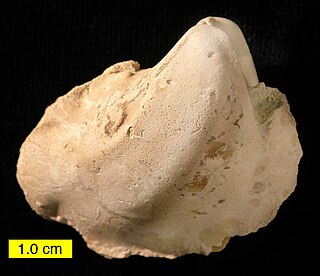 W
WLaevitrigonia is a genus of fossil clams, marine bivalve mollusks in the family Trigoniidae. This bivalve is sometimes preserved with mineralized soft-tissue.
 W
WMegalodon is an extinct genus of bivalve molluscs that reportedly lived from the Devonian to the Jurassic period. It is not clear, however, that all the fossils assigned to Megalodon from that span of time really belong in the same genus. Jurassic relatives of Megalodon such as Pachyrisma grande were closely related to the rudists.
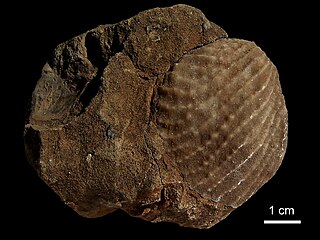 W
WMyophorella is a genus of fossil saltwater clams, marine bivalve mollusks in the family Trigoniidae. These bivalves are sometimes preserved with mineralized soft tissue.
 W
WMyophoria is an extinct genus of bivalve mollusk from Europe belonging to the family Myophoriidae. Fossils are mainly found in Triassic rocks.
 W
WNaiadites is an extinct genus of thin-shelled non-marine bivalve from the Upper Carboniferous coal-measures of Nova Scotia in Canada.
 W
WNeithea is an extinct genus of bivalve mollusks that lived from the Early Jurassic to the early Paleocene, with a worldwide distribution. Neithia sp. are inequivalve. That means that the two valves are not the same shape, the right valve being strongly concave and the left valve being flattened or concave. Sculpture consist of alternating strong and weaker radiating ribs.
 W
WNeomegalodon is an extinct genus of bivalve molluscs belonging to the family Megalodontidae.
 W
WPanenka is a genus of fossil saltwater clams, marine bivalve molluscs in the family Antipleuridae. Like most bivalves, these molluscs were suspension feeders. They lived in the Devonian Period.
 W
WPlagiostoma is a genus of fossil saltwater clams, marine bivalve mollusks in the family Limidae, the file clams.
 W
WPlatyceramus was a genus of Cretaceous bivalve molluscs belonging to the extinct inoceramid lineage. It is sometimes classified as a subgenus of Inoceramus.
 W
WPterorigonia is an extinct genus of saltwater clams, marine bivalve molluscs in the family Megatrigoniidae. This genus is known in the fossil record from the Jurassic period Tithonian age to the Cretaceous period Maastrichtian age. Species in this genus were facultatively mobile infaunal suspension feeders. The type species of the genus is Pterotrigonia cristata.
 W
WPycnodonte is a genus of extinct oysters, fossil marine bivalve mollusks in the family Gryphaeidae, the foam oysters or honeycomb oysters. Shells of species in this genus are found around the world in fossil shell beds from the Valanginian to the Early Pleistocene. They are a commonly found fossil in Cretaceous shellbeds of the Navesink Formation in New Jersey.
 W
WRequienia is an extinct genus of fossil saltwater clam, a marine bivalve molluscs in the order Hippuritida, family Requieniidae. These rudists lived in the Cretaceous period, from the Valanginian age (136.4–140.2) to the Campanian age. They were stationary intermediate-level suspension feeders.
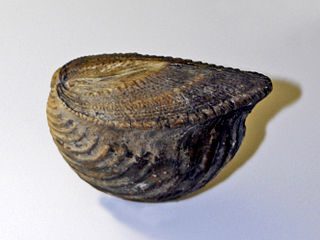 W
WTrigonia is an extinct genus of saltwater clams, fossil marine bivalve mollusk in the family Trigoniidae. The fossil range of the genus spans the Paleozoic, Mesozoic and Paleocene of the Cenozoic, from 298 to 56 Ma.